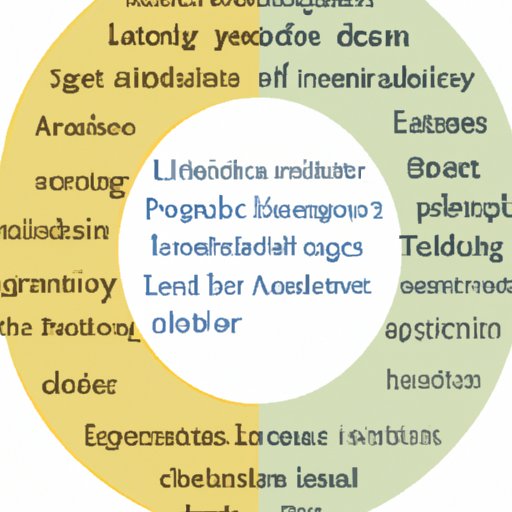Introduction
Themes in literature are recurring, unifying subjects or ideas that are explored in works of literature. Common literary themes include topics like good versus evil, life and death, love and hate, fate and free will, coming of age, and many others. By exploring these universal concepts, authors can tap into readers’ emotions and foster greater understanding of the human condition.
Uncovering the Meaning Behind Literary Themes
In order to uncover the meaning behind a literary theme, it is important to look beyond the surface level of a text. Authors often use symbols, motifs, and other literary devices to explore a theme in greater depth. For example, in William Shakespeare’s play “Romeo and Juliet,” the star-crossed lovers’ deaths symbolize the power of fate over free will. Similarly, in Ernest Hemingway’s short story “Hills Like White Elephants,” the imagery of a white elephant represents an unwanted pregnancy.
In addition to examining symbols and motifs, it is also important to analyze the narrative structure of a work in order to uncover its underlying themes. An author’s choice of plot points, characters, and setting can all contribute to the development of a particular theme. In Toni Morrison’s novel “Beloved,” the main character’s struggle to reconcile her traumatic past with her present circumstances is used to explore the theme of identity.

How to Identify Themes in Literary Works
Once you have established the basic plot and characters of a work, you can begin to identify the underlying themes. One way to do this is by examining the development of the characters. How does each character change throughout the course of the story? What traits do they possess that may be related to a particular theme? In J.D. Salinger’s novel “The Catcher in the Rye,” Holden Caulfield’s journey from innocence to experience serves as an exploration of the theme of growing up.
It is also important to consider the setting and dialogue of a work when identifying themes. How do the physical surroundings of the characters affect their behavior and decisions? What conversations do they engage in that may be related to a particular theme? In Harper Lee’s classic novel “To Kill a Mockingbird,” the small town of Maycomb serves as a backdrop for exploring the theme of racism.

Analyzing Literary Themes: Examining the Impact of Different Themes
Once you have identified the themes of a work, it is important to consider the social, cultural, and philosophical implications of those themes. How does the author’s exploration of a particular theme challenge or reinforce existing values and beliefs? In Charlotte Bronte’s novel “Jane Eyre,” the theme of female empowerment provides a critique of the traditional gender roles of the Victorian era.
It is also important to consider any contextual references in a work when analyzing its themes. Does the author draw upon certain historical events or cultural phenomena to reinforce a particular theme? In George Orwell’s novel “1984,” the idea of a totalitarian government can be seen as a warning against the dangers of totalitarianism in the real world.

Exploring the Role of Themes in Modern Fiction
In modern fiction, authors are increasingly using themes to explore postmodern conventions and contemporary issues. Postmodern works often challenge traditional notions of genre and reality, while also exploring themes of identity and alienation. In Margaret Atwood’s novel “The Handmaid’s Tale,” the protagonist’s struggle against a repressive society serves as a commentary on the status of women in contemporary society.
Contemporary fiction also focuses on themes related to social justice, environmental sustainability, and other pressing issues. These works often seek to raise awareness about current problems and inspire readers to take action. For example, in Tayari Jones’s novel “An American Marriage,” the themes of racial inequality and mass incarceration are used to explore the effects of systemic racism in the United States.
Conclusion
Themes in literature can be used to explore universal ideas, uncover hidden meanings, and examine the impact of different themes on modern fiction. By analyzing symbols, motifs, characters, setting, and dialogue, readers can gain a deeper understanding of a work and its underlying themes. Through the exploration of themes, authors can tap into readers’ emotions and foster greater understanding of the human condition.
In conclusion, themes in literature serve as a powerful tool for connecting readers to a work and allowing them to uncover its hidden meanings. By carefully analyzing a work’s narrative structure and contextual references, readers can gain a better understanding of its themes and their implications.
(Note: Is this article not meeting your expectations? Do you have knowledge or insights to share? Unlock new opportunities and expand your reach by joining our authors team. Click Registration to join us and share your expertise with our readers.)
